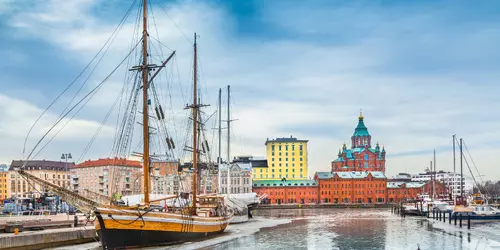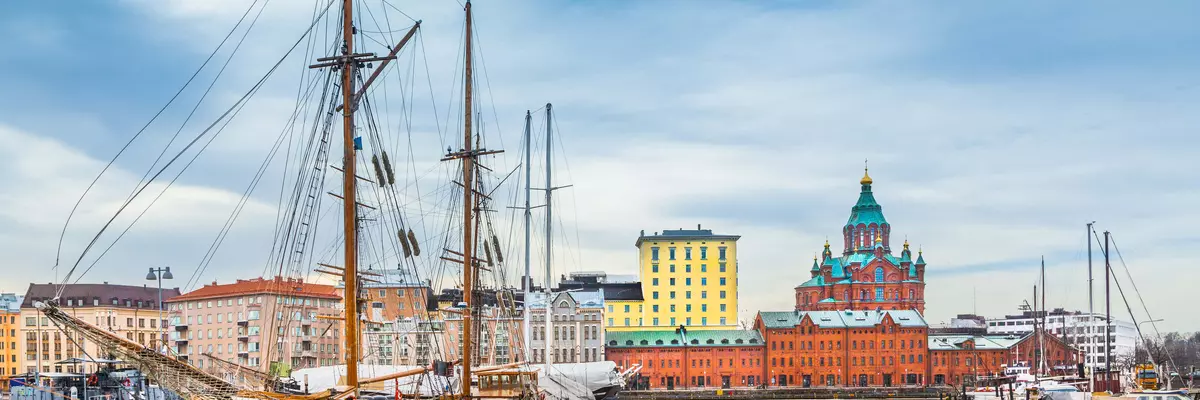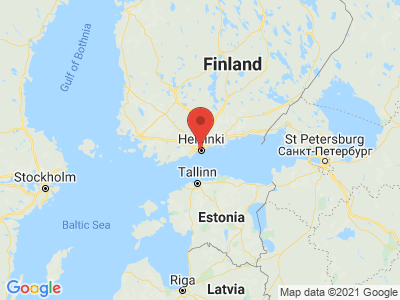Climate Table Helsinki
Jan | Feb | Mar | Apr | May | Jun | Jul | Aug | Sep | Oct | Nov | Dec | |
|---|---|---|---|---|---|---|---|---|---|---|---|---|
| Max. Temperature | -2° | -2° | 1° | 10° | 15° | 20° | 22° | 19° | 15° | 9° | 2° | -1° |
| Min. Temperature | -5° | -7° | -6° | 1° | 4° | 11° | 13° | 10° | 7° | 4° | -1° | -4° |
| Sun Hours | 1 | 2 | 5 | 7 | 8 | 9 | 9 | 9 | 6 | 2 | 1 | 1 |
| Water Temperature | 1° | 0° | 0° | 0° | 5° | 12° | 19° | 18° | 16° | 12° | 8° | 4° |
| Rain Days | 23 | 18 | 12 | 12 | 9 | 14 | 9 | 12 | 11 | 19 | 18 | 21 |
The climate year of Helsinki
The climate in Helsinki is moderate compared to other regions of Finland. This is favored by the location in the south of the country directly on the Baltic Sea, which provides for a mixture of continental and maritime influences. Due to the proximity to the North Atlantic Current, temperatures drop less than in the southern regions of Alaska and Greenland, which are located at the same latitude. Typical for Helsinki, besides a high number of rainy days, are the distinct seasons with large temperature differences. A long and dark winter with extensive snowfalls and temperatures below freezing point are contrasted by pleasant summer months with abundant sunshine hours and mild temperatures. Particularly charming are the "White Nights" around the summer solstice in June, when the sun sinks behind the horizon only for a short time, leaving the nights in a dim light.
General information about Helsinki
The cityscape of Helsinki is dominated by a combination of classicist buildings and art nouveau houses. The most prominent building and landmark of the city is the cathedral, which was built in the mid-19th century according to plans by architect Carl Ludwig Engel. Also worth seeing is the Finnish Orthodox Uspenski Cathedral with its red brick facade and gilded spires. Other sights include Suomenlinna Fortress, which is located on several islands off the coast and has been part of the UNESCO World Heritage Site since 1991. Art lovers will find collections of local and international artists from various periods, from the 18th century to modern times, in the exhibition rooms of the National Gallery and the Helsinki Art Hall. The National Museum also offers insights into Finland's history from prehistoric times to the present. In the summer months, parks and beaches invite visitors to enjoy outdoor activities, and numerous festivals transform the city into a paradise for music lovers.
Tourism Helsinki
Winter in Helsinki lasts from November to April and is characterized by low temperatures and short days. The first snow usually falls in November and provides a solid snow cover in the following months. The sun shines for a maximum of one to two hours per day during this period, and around the winter solstice in December it only gets really bright for six hours. With a constantly high probability of precipitation, temperatures reach their lowest point in January and February. It is not until April that the snow slowly begins to melt and by May a short but intense spring allows nature to awaken again. It gradually becomes warmer and both the amount of precipitation and the number of rainy days decrease significantly. Mild summer days follow from June to August, with sustained brightness until late at night. While June and July have the most hours of sunshine, the number of rainy days increases again significantly from August onwards. In September and October a short autumn transforms nature into a colorful spectacle. Even if the temperatures are already significantly cooler and the days are getting shorter again, September in particular still offers good conditions for extensive city explorations before the first frost announces the next winter.


